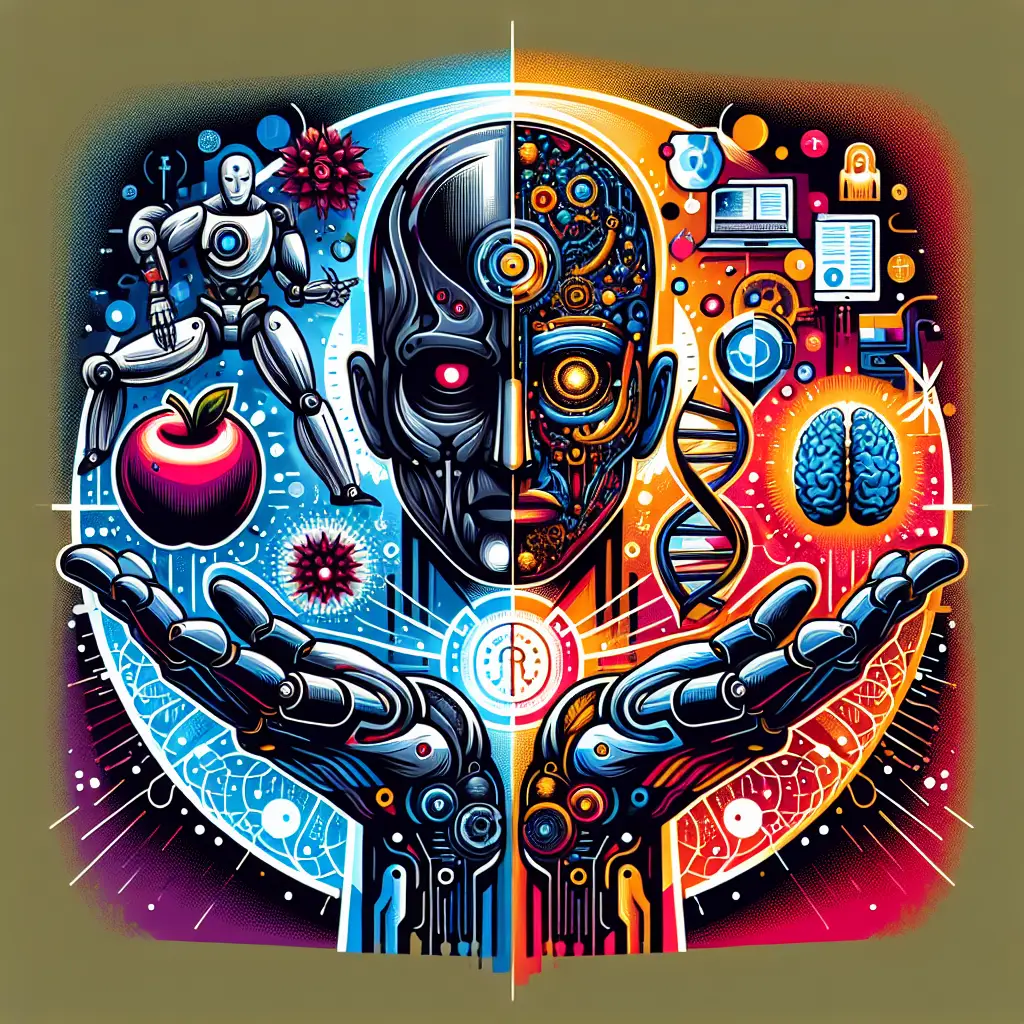In today’s era of rapid technological advancement, Artificial Intelligence (AI) has gained substantial focus. The unprecedented potential of AI to revolutionize various sectors has sparked a global conversation on whether it represents a threat or an opportunity. It is a critical dialogue, as the unfolding impacts of AI hold potential repercussions for the evolution of humankind, propelling a new era of global development.
AI refers to the simulation of human intelligence by machines that are programmed to think like humans and replicate their actions. The phrase also applies to any device exhibiting traits related to the human mind, such as learning and solving problems. This revolutionary technology has the potential to advance industrial efficiency, reshape economies, and transform lifestyles. Yet, there are genuine concerns about the implications of AI, such as job displacements and possible misuse, leading to a debate anchored on fear and hope.
AI as an Opportunity
The beneficial aspects of AI are plentiful. First and foremost, AI offers opportunities to improve productivity and efficiency. Through machine learning algorithms and predictive analysis, AI expedites decision-making, reduces human error, and enhances performance across various industries. In manufacturing, AI-driven automation accelerates production rates while maintaining quality standards. In healthcare, AI tools aid in early and accurate disease diagnosis, optimized patient care, and advanced treatment procedures, promising a major leap in medical science.
Employment is another area where AI might bring opportunities. It is projected that AI will open up new markets and create job categories that we cannot presently envisage. These will be substantially different from traditional roles and will require a new set of skills, leading to comprehensive workforce training, skill development, and potentially, higher wages.
AI also fortifies our abilities to solve complex, global challenges. Climate change, for instance, can be tackled more effectively by harnessing the power of AI. Leveraging AI for predictive climate modeling, resource management, and energy conservation can help achieve sustainable development goals. Similarly, AI has the potential to democratize education and accelerate scientific research, paving the way for a brighter future.
AI as a Threat
Despite these advantages, apprehensions persist. A significant concern is job displacement. With automation gaining traction, there are fears that AI might render many traditional jobs redundant, leading to unemployment. Jobs involving routine tasks are particularly endangered, while roles demanding creativity, critical thinking, and emotional intelligence are likely to endure.
Beyond job displacement, AI introduces ethical questions and challenges. There are fears around the misuse of AI, which can become a tool for mass surveillance, privacy invasion, and even lethal autonomous weapons. The morality of AI decision-making also poses dilemmas, such as in the case of self-driving cars where an AI might have to determine the lesser of two evils during an accident.
Furthermore, AI’s capability to produce deepfakes (false but believable content) can disrupt society. From creating persuasive fake news to fictional events, deepfake technology could be used maliciously. The consequences of such actions could range from individual reputation damage to political destabilization.
Moreover, there’s the looming concern about ‘superintelligence.’ Some believe that as AI surpasses human intelligence, it might exist outside human control, eventually outsmarting human intellect and potentially posing an existential threat.
Navigating the AI Landscape: Mitigation and Adaptation Strategies
To fully harness the potential of AI and mitigate its challenges, a multifaceted approach is needed. It involves proactive policymaking, consistent regulation, investment in education, and ethical AI development.
Policymakers need to create robust regulations to govern the development and application of AI. Regulatory policies should focus on protecting privacy, ensuring safety, and promoting transparency. International consensus on AI rules should also be pursued to ensure accountable AI development and application across borders.
Education, skill-development, and lifelong learning should be prioritized to adapt to the changing job landscape stemming from AI advancement. Adequate emphasis should be on STEM education, creativity, critical thinking, and emotional skills since these are likely to be in demand in an AI-driven world.
Ethics should be ingrained in the AI development process to ensure that AI technologies are used responsibly and do not inadvertently cause harm. An integrated human-AI decision-making model could be a way forward to ensure moral decisions.
While navigating this uncertain but potential-rich landscape, it’s crucial to remember that AI is a tool — one that reflects our values and objectives. The dilemma whether AI is a threat or opportunity ultimately boils down to how we develop, control, and use this unprecedented technological power. By adopting thoughtful strategies and responsible practices, we can certainly guide AI towards a course that supports humanity’s progress and prosperity.
Share this content:

